Filter by

Introduction to Supersymmetric Field Theory
Ideas and Methods of Supersymmetry and Supergravity: Or a Walk Through Superspace provides a comprehensive, detailed, and self-contained account of four dimensional simple supersymmetry and supergravity. Throughout the book, the authors cultivate their material in detail with calculations and full discussions of the fundamental ideas and motivations. They develop the subject in its superfield f…
- Edition
- -
- ISBN/ISSN
- 9780367802530
- Collation
- 656 p
- Series Title
- -
- Call Number
- 530 KUZ i

Interface
In this book, Branden Hookway considers the interface not as technology but as a form of relationship with technology. The interface, Hookway proposes, is at once ubiquitous and hidden from view. It is both the bottleneck through which our relationship to technology must pass and a productive encounter embedded within the use of technology. It is a site of contestation -- between human and mach…
- Edition
- -
- ISBN/ISSN
- 9780262322621
- Collation
- 1 online resource
- Series Title
- -
- Call Number
- -

Designing Bioactive Polymeric Materials for Restorative Dentistry
Restorative biomaterials in dentistry are designed to restore the shape and function of teeth. Their applicability is related to restorative procedures such as dental restorations, dentures, dental implants, and endodontic materials. Designing Bioactive Polymeric Materials for Restorative Dentistry reviews the current state of the art for restorative biomaterials and discusses the near-future t…
- Edition
- -
- ISBN/ISSN
- 9780429113284
- Collation
- p. 298
- Series Title
- -
- Call Number
- -

Water Quality Management Assessment and Interpretation
Considering the significance of water quality for drinking, irrigation and industry, availability of accurate and sufficient water quality data is necessary and having enough data without proper interpretation is not helpful for water quality management decisions. Hence, analysis of the existing data and prediction of future of water quality is vital. The current volume first defines the imp…
- Edition
- -
- ISBN/ISSN
- 978-3-662-44725-3
- Collation
- -
- Series Title
- -
- Call Number
- -

Environmental Arsenic in a Changing World
The Congress "Arsenic in the Environment" offers an international, multi- and interdisciplinary discussion platform for research and innovation aimed towards a holistic solution to the problem posed by the environmental toxin arsenic, with significant societal impact. The Congress has focused on cutting edge and breakthrough research in physical, chemical, toxicological, medical, agricultural a…
- Edition
- -
- ISBN/ISSN
- -
- Collation
- -
- Series Title
- -
- Call Number
- -
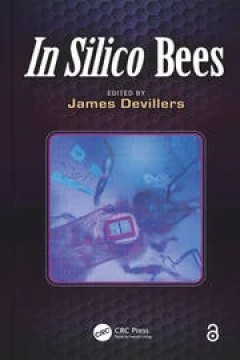
In Silico Bees
Bees are critically important for ecosystem function and biodiversity maintenance through their pollinating activity. This book provides a collection of computational methods to those primarily interested in the study of the ecology, ethology, and ecotoxicology of bees. It presents numerous case studies to enable readers to understand the appropriateness but also the limitations of models in th…
- Edition
- -
- ISBN/ISSN
- -
- Collation
- -
- Series Title
- -
- Call Number
- -
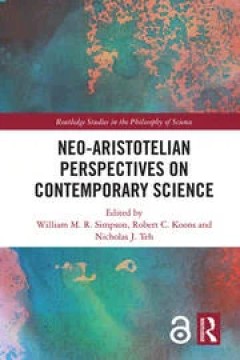
Neo-Aristotelian Perspectives on Contemporary Science
The last two decades have seen two significant trends emerging within the philosophy of science: the rapid development and focus on the philosophy of the specialised sciences, and a resurgence of Aristotelian metaphysics, much of which is concerned with the possibility of emergence, as well as the ontological status and indispensability of dispositions and powers in science. Despite these recen…
- Edition
- -
- ISBN/ISSN
- -
- Collation
- -
- Series Title
- -
- Call Number
- -
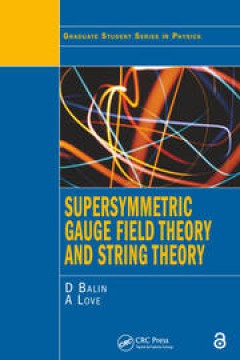
Supersymmetric Gauge Field Theory and String Theory
Designed as a sequel to the authors' Introduction to Gauge Field Theory, Supersymmetric Gauge Field Theory and String Theory introduces first-year graduate students to supersymmetric theories, including supergravity and superstring theories. Starting with the necessary background in quantum field theory, the book covers the three key topics of high-energy physics. The emphasis is on practical c…
- Edition
- -
- ISBN/ISSN
- 9780367805807
- Collation
- -
- Series Title
- -
- Call Number
- 100
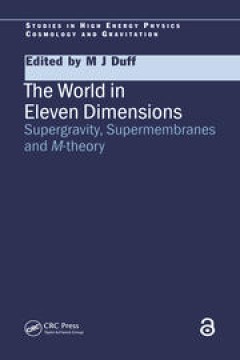
The World in Eleven Dimensions : Supergravity, supermembranes and M-theory
A unified theory embracing all physical phenomena is a major goal of theoretical physics. In the early 1980s, many physicists looked to eleven-dimensional supergravity in the hope that it might provide that elusive superunified theory. In 1984 supergravity was knocked off its pedestal by ten-dimensional superstrings, one-dimensional objects whose v
- Edition
- -
- ISBN/ISSN
- 9780429176142
- Collation
- -
- Series Title
- -
- Call Number
- 100
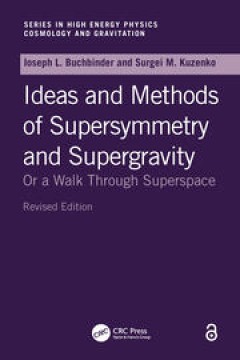
Introduction to Supersymmetric Field Theory
Ideas and Methods of Supersymmetry and Supergravity: Or a Walk Through Superspace provides a comprehensive, detailed, and self-contained account of four dimensional simple supersymmetry and supergravity. Throughout the book, the authors cultivate their material in detail with calculations and full discussions of the fundamental ideas and motivations. They develop the subject in its superfield f…
- Edition
- -
- ISBN/ISSN
- 9780367802530
- Collation
- -
- Series Title
- -
- Call Number
- -
 Computer Science, Information & General Works
Computer Science, Information & General Works  Philosophy & Psychology
Philosophy & Psychology  Religion
Religion  Social Sciences
Social Sciences  Language
Language  Pure Science
Pure Science  Applied Sciences
Applied Sciences  Art & Recreation
Art & Recreation  Literature
Literature  History & Geography
History & Geography